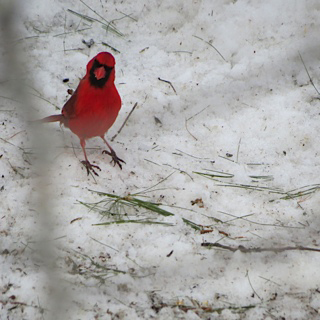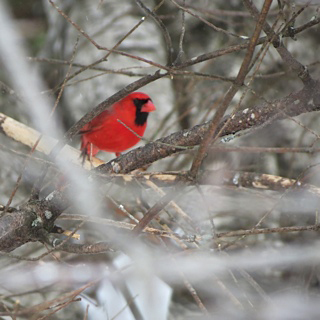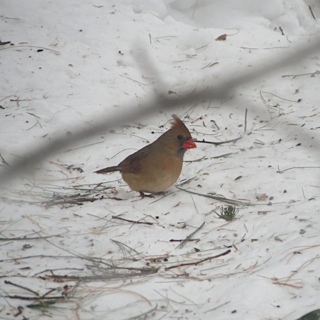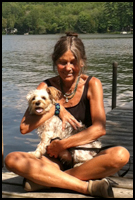April 2015, Issue #2
FRAGILE ONGOING
TABLE OF CONTENTS
Editorial
I. OPENING REMARKS
Jan Clausen
“This Moment the World Continues”: Writing under the Sign of Species Suicide
Robin W. Kimmerer
When Earth Becomes an ‘It’
Kathleen Dean Moore
The Rules of Rivers
II. GRIEVING
Cynthia Travis
The Music of Grief
Megan Hollingsworth
Pacific
Ruth Wallen
Cascading Memorials: Public Places to Mourn
Joan Kresich
Letter to a Yellowstone Wolf
Susan Marsh
Elegy for the Cranes
 The Hunters
The Hunters
Karla Linn Merrifield
William Bartram Triptych
Dana Anastasia
trinkets
Gillian Goslinga
To Witness
III. GUIDED
Deena Metzger
Dreaming Another Language: She Will Not Kill
Alexandra Merrill
Homage to Bees
Sheila Murray
Infiltration
 Prey
Prey
Judy Grahn
Dragonfly Dances
Laura D. Bellmay
A Call from the Edge
Carolyn Brigit Flynn
Grandmother Squirrel
Nora Jamieson
Fleshing the Hide
Sara Wright
Cardinals at the Crossroads
Valerie Wolf
Dreaming the Future
Sara Wright
Cardinals at the Crossroads
Three days before All Hallows, the night my father called to tell me about his cancer, I found a decapitated heron at the edge of the stream. Four days later, on the morning my father died, I dreamed he had turned into a beaver. The next day at dawn, a pure white dove flew down to the ground outside my window and pecked at the birdseed I’d scattered, only to vanish at sunset like a ghostly apparition. That night during a phone conversation with my uncle, we exchanged dove stories in disbelief; he had just bitten into some pasta and pulled a tiny white stone dove from his mouth. The next morning, the sight of two cardinals at my feeding place stunned me; in thirty five years of bird feeding, they had never come before. The male’s brilliant vermillion color seemed to bleed into the white snow, reflecting my fiery loss in a visceral way. The next day, these birds disappeared as mysteriously as they had come. Surely something was at work here, but I had no idea what.
Unfortunately, at the time of his death, my father and I had never managed to repair our fragile father-daughter relationship. As a result, my loss was tinged with a child’s fierce longing to be loved; I felt that I had been orphaned by Chaos. Everything felt disordered; there was no funeral for a man who desperately needed approval, no acknowledgment or respect for a life lived in decency, albeit explosively and without much awareness. His only two grandchildren and his wife, my mother, would not attend the Memorial service that my uncle and I were planning, a fact that, frankly, horrified me.

Two months later, on the day of the service, I entered a church so staggeringly beautiful that my breath caught in my throat. The marbled floor and altar provided a back drop for hundreds of magnificent deep scarlet poinsettias and a shining crimson altar cloth. Even the stained windows bled ruby shards of cracked glass into the Gothic arches over my head. Myriad evergreen sprays of pine, hemlock and fir provided sharp contrast and adorned every corner of the church. This display of riotous color acknowledged and honored my father’s life on a level that I couldn’t comprehend in a rational way — much the way the sight of the male cardinal, dressed in his scarlet coat and cap, had affected me by appearing after my father’s death.
A year later, at the end of October, another crisis struck; I was forbidden to see my only grandchild, a thirteen-month old baby I adored. Stunned by the cruelty, I fought back. To allow our difficult — and to me, baffling — mother-son issues to poison a third generation felt ethically unjust; I took my oldest son to court in order to gain visitation rights. On the night the court date was set for the following May, I received news that a second grandson would be born in a couple of months. The next day, a male cardinal briefly materialized at dawn; I was struck by the appearance of another of these “red” birds at the family crossroads of life and death.
On the February day that Cameron was born, a buck still wearing his antlers appeared in the field, walked over to a large fir tree, and lay down beneath it. I stared as a blossoming white moon cast her silver shadows around him and the tree. The biblical words “and the lion shall lay down with the lamb” materialized in the air, and it seemed to me at that moment that the snow bled cardinal red.
The day before I lost the court case, I heard the melodious whistle of the male cardinal singing to his mate. As I rushed out the door to locate the bird, a heron flew towards me from out of the swamp, stopping me in my tracks. Then came another and another; so many of these normally solitary herons flew over my house that day that I lost count of them. How could I forget the decapitated heron I had found just before my father died? I never did see the cardinals, and their song ceased abruptly. My youngest son testified against me. I dimly recognized that I had been cast in the same role as my father, that of the unworthy parent. I didn’t know it then, but I would be forbidden to see either of my grandchildren for almost twenty years. By responding to injustice with a court case, I gave my children and their grandmother (my mother) all the ammunition they needed to expel me from my own family, which they did promptly, using the sword of silence as the weapon of betrayal.
After the trial, I was buried in an avalanche of grief. Depression froze feeling in place as I began a twenty-year journey through a psychic wilderness that contrasted sharply with the magnificent wilderness and mountains that surrounded me. I wrote my way through death with words, turning to Nature for comfort, and although I didn’t recognize it yet, birds, animals, plants, trees and stars had already become my Guides.
I never spoke of my losses; I was too ashamed of what my children had done. I went to graduate school and became a teacher. I became a more passionate naturalist, whose comfort came on the wings of a hawk, an owl, a hummingbird, the sight of a deer and black bear; these became my adopted family, allowing me to lean into them through the haze of grief. Although I no longer had a human family in any meaningful sense of the word, the Spirit of Nature had not deserted me. She was always there, ready to communicate with me through one of her creatures. All I had to do was to pay attention.

A few years passed and one fall, a male cardinal unexpectedly appeared at my feeder. I had a bewildering insight during his visit: my “fate” was inexorably attached to the same pattern of loss that had dominated my father’s life. My dad had unknowingly surrendered both his children to his wife and her maternal family through his absence and rage. My mother, a very clever woman, played the role of stoic, but never missed an opportunity to ridicule or denigrate my father, as did her relatives. All believed that my father, a first-generation Italian immigrant, was beneath them. As children, my brother and I learned to dismiss our father without understanding why. My father’s long work-related absences and his explosive emotional nature left us confused and resentful. Watching the cardinal, I suddenly understood that after my brother’s suicide, I had unwittingly repeated my father’s pattern by emotionally surrendering my children to my parents out of survivor’s guilt.
After finishing graduate school, I built a small cabin on the patch of woods, field and stream that I ‘owned’ and in December, the day after I moved in, two male cardinals and a female emerged from under the two pines whose boughs created a sheltered spot just outside my door. Crimson drops once again bled into white snow. Each evening at dusk, I involuntarily held my breath as I waited for the birds to appear.
That spring, the second male disappeared, but the couple raised two chicks here, choosing a densely branched balsam tree down by the brook for their nesting place. At dusk, I sat on the porch, waiting for them to come to feed. The adults always announced their presence with staccato-like clicks. I loved watching the two young mottled nestlings eagerly taking seed out of their parents’ broad beaks, impatiently flapping their wings as they hopped about under the safety of the pine boughs. The parents and I communicated wordlessly; they watched me as intently as I watched them, and I sensed the deep bond growing between us.
During the next few years, the cardinals’ presence helped me deal with the depression that had gradually become chronic. Each time I heard one whistle or witnessed the parents raising another brood, I was catapulted into the present moment. I relaxed my vigil around these birds. By this time, my involvement with birds and animals had more depth and was more intimate than any relationship I had experienced with humans, with the exception of my children and grandchildren. I also felt brief moments of what it would be like to experience hope as a possible way of being in the present, acknowledging sorrow but not drowning in it--living each day in gratitude and simplicity.
During a walk one lush blue and gold summer afternoon, I saw a fledgling male cardinal sitting on the lowest branch of a crabapple tree. One wing hung down uselessly. My beautiful coon cat Zoe was poised to strike again. I screamed in horror, scaring the two adult cardinals out of the nearby pines where they had been helplessly watching the scene unfold.
Leaping towards the crabapple, I swept the chick into my hands and began to weep, screaming at the cat between sobs. Both parents, having flown into the upper branches of the crabapple, kept a sharp eye on me. I got the cat inside and sat down on the steps to assess the damage to the chick. There was blood, so Zoe had bitten him. His wing was mangled. I knew that the bacteria from a cat bite could kill a bird slowly and painfully in a matter of days. The parents watched anxiously, and I finally decided to leave him to their care. Beneath the shelter of the pine boughs, I placed him on the ground with food and water. That night, the three huddled together, but the next morning the parents flew away and this time, they didn’t return. I couldn’t bear it and brought the little bird into the house.
I set the badly broken wing knowing in my heart that “little red” would never again take flight. He lived for two more days, gazing at me with increasingly dull, listless eyes. When he took his final breath, I wept. I buried him under my favorite crabapple, and once again the world went black. The parents still came to feed at dusk, but I had unintentionally broken a sacred trust between us. This place was no longer a safe haven for them. A week later, the cardinals vanished.
Soon after, I flew to the mountains of Mexico to stay with colleagues. One day we went to the outdoor market and there to my horror were three young cardinals stuffed into a six-inch square cage. I burst into uncontrollable weeping, shocking my two friends. I had to set those cardinals free. My spending money would only cover the release of one cardinal, and I was forced to make an impossible choice. Handing over all of my money, I bought a young male who was given to me stuffed in a small paper bag. His wings beat frantically. My friends obliged me by driving around until I found a place near water with good leafy green cover. Tears rolling down my face, I got out of the car, gently held the bird’s wings clasped to his body, and then I set him free. He disappeared instantly into the emerald green landscape. I stood frozen in time. Suddenly out of the copse of trees and tangled vines, I heard the clearest cardinal whistle. He sang to me twice.
When I returned from my trip, a new pair of cardinals was nesting in the pines outside my bedroom window. With deep gratitude, I listened to their magnificent love songs each dawn. They raised a single female chick who seemed especially attached to her parents. Every night under the pines, they took turns feeding her sunflower seed, even long after she was as big as they were.
This was the last summer cardinals would nest or raise their young in my patch of woods and stream. The youngster moved away in the fall, but the adults still visited their feeding station under the pines each evening. Then one night in November, the male appeared alone.
Because cardinals mate for life, the missing female alerted me to the possibility of her untimely death. After three nights spent anxiously awaiting a glimpse of her, I had to accept that she was gone. Heartbroken for the male, I waited for him to appear each evening. When he did, he would shine one beady eye in my direction as he ate. There was no question in my mind that he and I were grieving our loss together.
In April, he began his poignant mating whistle from the pines. For a few days the calls were strong and clear, but they went unanswered. One morning he stopped singing. The next day, he was gone.
Although I sometimes heard male cardinals singing in the distance as I walked my dog, I never saw any. During these years, every attempt to make contact with my mother and sons was met with a resistance that was mirrored by dreams, in which I climbed endless snow-capped mountains alone.
Then one April, my mother died. The very next day, I heard a male cardinal’s signature mating call. For a brief moment, I wondered if my mother’s death might open the door to reconciliation with my two sons, but it was not meant to be. After a few months of heartbreak, I concluded that somehow I had to let go of hope with respect to family. I wondered how I could continue to survive, even as I went to work teaching, cared for my beloved dog, gardened, wrote, fed wild animals, gave workshops on Native American culture, studied medicine plants in Peru, and continued my research on black bears. At least I was still functional.

A year ago last November, a solitary female cardinal appeared under the pines, and remained here all winter. I watched her through binoculars, marveling at how beautiful she was in her russet coat flushed in rose. I was reconciled to the loss of continuous cardinal presence, so her visit seemed like a gift, and when she vanished in the spring, I accepted it. However, I wondered at the string of solitary cardinals, first males and now a female, that blinked in and out of my life like fireflies in the night. The males ushered in family loss, and the cardinals’ families helped me deal with those losses, but what might it mean to have a female cardinal in my life? I had no idea.
This fall when I heard the clear, repetitive clicking of a cardinal, I was delighted. The staccato sound came from my grapevine, now stripped of its leaves by November’s north wind. When I looked out, there she was, perched near some frozen grapes. I promptly opened the front door, scattered some seed under the pines, and watched from the window until I saw her drop to the ground to feed. Examining her through binoculars, I decided this was not the female that visited last winter. A bittersweet beak set off the subtle smudged olive feathers of her coat; her beaded eyes and tufted peak brought tears to my eyes.
Each morning I leapt out of bed to give her some seed as she clicked from the grapevine. When it became apparent she was alone, I was astonished; she had been calling out to me to bring her seed. Soon, she began clicking during odd times of the day for her meager ration of seed. Amazingly, she always seemed to sense which room I was in.
She also chirped at me when I was outside, sometimes following me into the overgrown field strewn with white pines when I walked or snow-shoed down the paths. One day she chirped with such exuberance that I sang back to her a little song that I made up on the spot, having no idea what it meant. “I’m a little cardinal sitting in a tree, I can be the bridge you need me to be.” She eyed me from her perch with what appeared to be genuine affection, then excitedly chirped back. A thunderbolt struck: I realized this little bird was bridging me to hope, and I felt light flood my body. No wonder I had fallen in love with her. Just as the male had once ushered in profound loss with its all its fire, chaos and loss of familial blood, she seemed to embody a message of hope I could feel.
The day after Christmas, I had a visit from my grandsons, Drew and Cameron. They wanted to learn more about me, the grandmother they were denied until adulthood, and to know more about their Italian heritage. Our future together depends upon us, we decided, and includes the dream of a trip to Italy. Our planning for the future manifested in the giant bulb they brought me as a gift. A bulb aptly named “Desire.”
Desire, I mused after my grandsons’ visit, is a double-edged sword. Desire, want, and need constellate the fear of more loss. The only way to deal with fear is to let go of the outcome, to accept the cycles as they come and go. I think this is another lesson that the cardinals have been trying to teach me through their presence and absence over the last twenty years. Today I do my best not to project into the future with respect to cardinals or grandsons. I take the gifts offered, understanding that as with any act of grace from Nature, there is always a cresting of feeling, awe with its accompanying “high,” and then a letting go.

Sara Wright is a naturalist and a writer. She lives in a little log cabin in the woods by a brook with two small dogs and two doves. She writes stories about the animals and plants that live here on her property in the western mountains of Maine and publishes them regularly in local paper’s nature column. She is also an independent black bear researcher who uses “trust- based” research to study the bears that have visited there. Since 2000, she has been exploring interspecies communication in collaboration with Rupert Sheldrake. She has Passamaquoddy roots, which may or may not be why she has dedicated her life to speaking out on behalf of the slaughtered trees, dying plants and disappearing animals. This is the only work that matters to her.
Want to comment on any Issue of Dark Matter, fill out the form here.
Copyright © 2014-2021 Dark Matter: Women Witnessing - All rights reserved to individual authors and artists.
Email: Editor@DarkMatterWomenWitnessing.com
Please report any problems with this site to webmaven@DarkMatterWomenWitnessing.com
